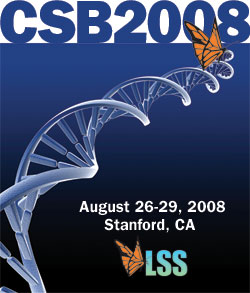Optimizing Bayes error for protein structure model selection by stability mutagenesis
Xiaoduan Ye, Alan Friedman, Chris Bailey-Kellogg*
Department of Computer Science, Dartmouth College, 6211 Sudikoff Laboratory, Hanover, NH 03755. cbk@cs.dartmouth.edu
Proc LSS Comput Syst Bioinform Conf. August, 2008. Vol. 7, p. 99-108. Full-Text PDF
*To whom correspondence should be addressed.

Site-directed mutagenesis affects protein stability in a manner dependent on the local structural environment of the mutated residue; e.g., a hydrophobic to polar substitution would behave differently in the core vs. on the surface of the protein. Thus site-directed mutagenesis followed by stability measurement enables evaluation of and selection among predicted structure models, based on consistency between predicted and experimental stability changes (ΔΔG°). This paper develops a method for planning a set of individual site-directed mutations for protein structure model selection, so as to minimize the Bayes error, i.e., the probability of choosing the wrong model. While in general it is hard to calculate exactly the multi-dimensional Bayes error defined by a set of mutations, we leverage the structure of "ΔΔG° space" to develop tight upper and lower bounds. We further develop a lower bound on the Bayes error of any plan that uses a fixed number of mutations from a set of candidates. We use this bound in a branch-and-bound planning algorithm to find optimal and near-optimal plans. We demonstrate the significance and effectiveness of this approach in planning mutations for elucidating the structure of the pTfa chaperone protein from bacteriophage lambda.
[ CSB2008 Conference Home Page ] .... [ CSB2008 Online Proceedings ] .... [ Life Sciences Society Home Page ]